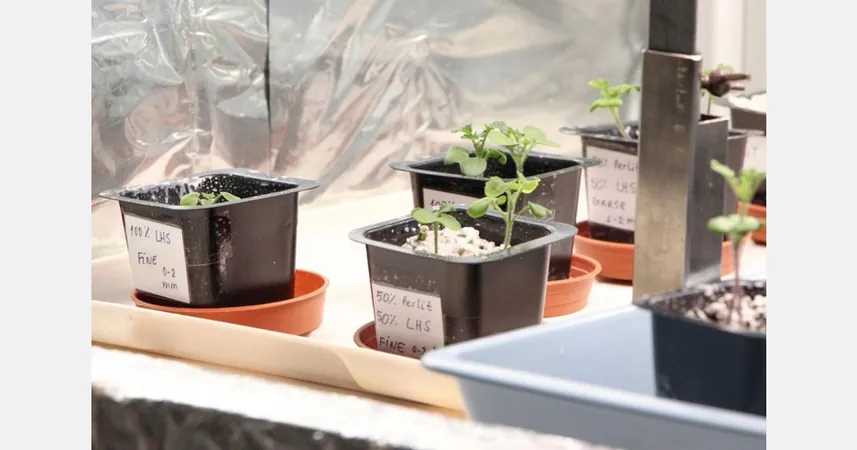
A Groundbreaking Leap: Hungarian University Successfully Grows Mustard in Simulated Lunar Soil!
2024-11-07
Author: Sophie
A Groundbreaking Leap: Hungarian University Successfully Grows Mustard in Simulated Lunar Soil!
In an incredible breakthrough that could revolutionize space agriculture, researchers at the Hungarian University of Agriculture and Life Sciences (MATE) have successfully cultivated mustard plants in a lunar soil simulation, marking the first time plants have thrived in such conditions using soil and not just hydroponics. This experiment not only achieved plant growth but also produced three viable seeds, setting a landmark in the quest for sustainable food production on the Moon.
The Experiment
During this remarkable experiment, MATE’s team, led by senior researcher György Barkó, sought to replicate the harsh conditions found in lunar caves, employing advanced lighting and precise water management tactics. Their work aligns with NASA's stringent guidelines, which emphasize the cultivation of plants that require minimal water, offer high oxygen production, are edible, and can effectively absorb volatile organic compounds present in their environment.
Why Mustard?
This versatile plant was chosen for its resilience and adaptability to the simulated lunar soil conditions. The successful sprouting of mustard seeds using minimal water is particularly significant, as it demonstrates the potential for terrestrial plants to thrive in extraterrestrial settings—a crucial aspect for future lunar missions.
Optimizing Water Use
Moreover, the researchers discovered that it’s possible to extract moisture from minerals through heat treatment methods, like heating copper sulfate, further optimizing water use in this lunar-like environment. This finding suggests that sustainable agriculture on the Moon may be more achievable than previously thought, paving the way for long-term human presence in space.
Future Implications
As we look towards future missions—like NASA's Artemis program, which aims to return humans to the Moon—this breakthrough underscores the vital role that innovative agricultural practices will play in feeding astronauts and establishing permanent lunar bases. The pursuit of growing food on other celestial bodies could change everything we know about space exploration and our future in the cosmos.
Conclusion
This pioneering work from MATE not only showcases the potential for growing food in outer space but also raises exciting questions: Could this lead to growing other types of crops? What implications does this have for Mars exploration? Only time will tell, but one thing is certain: the seeds planted today could lead to a future where humanity can sustain itself beyond Earth!









 Brasil (PT)
Brasil (PT)
 Canada (EN)
Canada (EN)
 Chile (ES)
Chile (ES)
 España (ES)
España (ES)
 France (FR)
France (FR)
 Hong Kong (EN)
Hong Kong (EN)
 Italia (IT)
Italia (IT)
 日本 (JA)
日本 (JA)
 Magyarország (HU)
Magyarország (HU)
 Norge (NO)
Norge (NO)
 Polska (PL)
Polska (PL)
 Schweiz (DE)
Schweiz (DE)
 Singapore (EN)
Singapore (EN)
 Sverige (SV)
Sverige (SV)
 Suomi (FI)
Suomi (FI)
 Türkiye (TR)
Türkiye (TR)